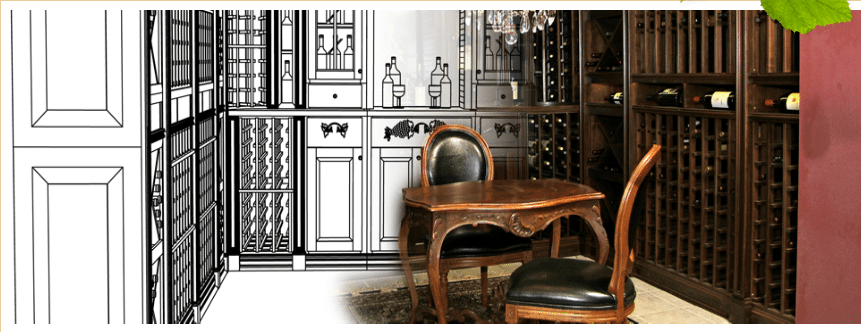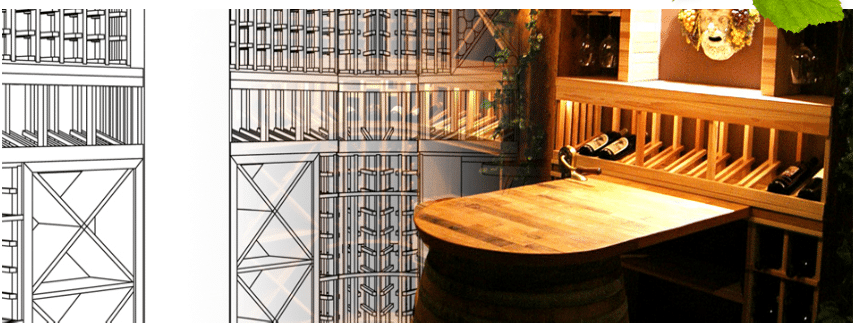The Different Types of Custom Wine Cellar Refrigeration Systems
Wine is a very sensitive beverage. It needs to be stored in the right conditions because it will spoil otherwise. A custom wine cellar with a quality wine cellar cooling unit installed can provide the ideal conditions for wine storage. On the market, there are various wine cellar cooling systems to choose from. Learn about the 3 basic types of custom wine cellar cooling systems and find out which is the right one for your home wine cellar.
1. Split Wine Cellar Cooling Systems
Oftentimes, Split Wine Cellar Cooling Systems are the most efficient way to cool a custom wine cellar. In most cases, cooling unit condensers are very noisy and take up a lot of space. With a Split Cooling System, the condenser is placed in a location outside the cellar, where heat and noise are localized, while the evaporator, which is quiet, is placed inside (or near) the custom wine cellar. You need to have a licensed HVAC/R technician install Split Custom Wine Cellar Refrigeration Systems.
Split Wine Cellar Cooling Systems can either be:
a. Ductless
The Ductless Split Wine Cellar Cooling Systems do not need venting into an adjacent room because the condenser, which is the part that produces heat, is placed in a separate location. There is no ducting connecting the units. Instead, what connects them is a simple line set, which is comprised of small copper tubing and some electrical wiring.
b. Ducted
Ducted Split Wine Cellar Refrigeration Systems have benefits similar to those of ductless systems. What differentiates them is that with the Ducted Split Wine Cellar Cooling Systems, there is no visible equipment inside the custom wine cellar at all. Cool air is efficiently ducted to and from the custom wine cellar. Unlike the ductless types, the evaporator is not inside the wine cellar at all in the ducted types.
2. Ducted Self-Contained Cellar Cooling Units
Ducted Self-Contained Cooling Systems can be installed up to 25 feet from the wine cellar. The cool air is blown into the custom wine cellar and the heat is exhausted to the outside of the home through a duct. This type of wine cellar cooling can be a little bit noisy, depending on how it is installed.
3. Self-Contained Through the Wall Custom Wine Cellar Refrigeration Units
Among all the custom wine cellar cooling units, self-contained through-the-wall cooling units are the most cost-effective as well as the easiest to install. These units can even be installed without the help of a licensed HVAC/R technician. The units are simply mounted on the wall of your custom wine cellar. One of the disadvantages to having this wine cellar cooling system is that it makes a lot of noise.
One end of this cooling system produces cool air and blows it into the residential wine cellar. The other end of the system absorbs the heat from the cellar and takes it out into a room adjoined to the custom wine cellar. It is important to remember that the adjoined room should be at least twice the size of your cellar unless the heat is exhausted into another area.








